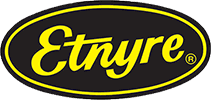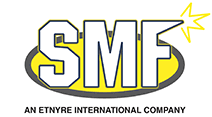Key Components of an Airburst System and How to Choose the Right Options
When designing a passive water intake screen, consideration is given to an airburst system to keep the intake operating efficiently. Over time, debris on the exterior of the intake screen reduces its capacity and requires cleaning to restore the intake’s efficacy. An airburst system is often purchased to assure that the intake system operates as designed, especially in high-debris environments.

Airburst systems are not ready-made. Each system is specifically designed based on the installation conditions and the size of the water intake screen(s). Design flexibility is often limited to how the end-user plans to operate the system. Each airburst unit can be automated or manually operated. Automated systems allow cleaning on a timed basis through a sophisticated communication system. Manual systems are no less effective, but require an operator to physically open the valve to clean the screen.
Whether automated or manual, all airburst systems are designed with four key components: a compressor, receiver, valves and control panel. Although some of the design decisions are predetermined by the needs of the water intake screen and its environment, there are some decisions that can be made when specifying an airburst system. Let’s review them.
Air Compressor
There are two types of compressors that can be used in a design. Smaller systems offer a choice between the two compressors, whereas the larger systems require the output that only the rotary screw compressor can offer.
Reciprocating Compressor
- Low output
- Costs increase above 15 HP
- Economical choice
Rotery Screw Compressor
- Greater air output: required in large systems
- Can run continuously
- Runs quieter
Electric Powered
- More efficient
- Less maintenance
Gas Powered
- Used when there’s no power at the source or in remote areas
- Portable
Receiver
The size of the receiver is dictated by the volume of air needed to clean the screen. It can be provided in a vertical or horizontal configuration, depending on the footprint available.
Valves
The valves control the release of compressed air to be delivered to the screen. Ball or butterfly valves are both effective for regulating the flow of air and can be designed for automatic or manual operations.
Ball Valve
- 1” to 3” in size
- Less restrictive flow rate
Butterfly Valve
- Available 3” and up
- Generally, less expensive to maintain
Control Panel
This can be considered the brain center of the airburst operation and a variety of options are available to accommodate a multitude of end uses. Regardless of how the unit is designed, it should be built to UL 508A standards. This assures the unit will meet predictable operating standards over the life of the system.
Manual
- Economical
- Portable
- Good for remote operations
Automated
- Scheduled intervals of operation
- Manual override
- Wide variety of communication methods, including ethernet
The most important decision to make when designing an airburst system is determining a vendor to work with. Choosing a knowledgeable, reliable, and cost-efficient supplier is important to the operational success of a water intake system. A qualified vendor will work with you to design a system that matches all the requirements needed so that the entire system, from water intake to airburst system, is maintained in peak efficiency.
Contact Hendrick Screen to review your needs for a water intake system and/or airburst system today.








